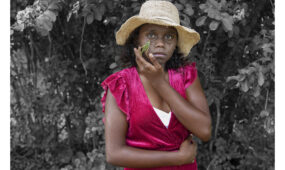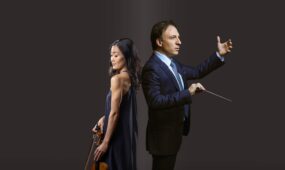Public art should surprise, delight ... even unnerve
InReview
We are all in the business of public art and the rules are – there are no rules. Nick Mitzevich explains the changing face of public art around the world, and how it pertains to Adelaide.

Late last year American artist Theaster Gates worked with a team of architects and idealists to build a sanctum – a humble, human-scale structure constructed within the ruin of the 14th-century Temple Church in Bristol as part of the cultural program for Bristol 2015 European Green Capital.
For 24 days, 24 hours a day, a continuous program of performance was presented to a maximum of 50 people (the capacity of the space).
Spoken word, performance art and a capella enlivened and reclaimed the site day and night, stretching the weary definition of public art as a permanent, static and, more often than not, monumental form, into something new, something alive, something for us all.
The curatorial genius behind Gates’ project is Situations, a public art organisation with few peers. Established in 2002 in Bristol, it has rewritten the rules on public art.
All of these pertain to Adelaide, particularly given the recent release of a public art guide that maps more than 100 public works in Adelaide’s CBD.
I’ve chosen to respond to a few of Situations’ “rules” – rules that prove there are no rules. All of them are worth pondering.
Rule 1: It doesn’t have to look like public art
The days of bronze heroes and roundabout baubles are numbered. Public art can take any form or mode of encounter – from a floating Arctic island to a boat oven. Be prepared to be surprised, delighted, even unnerved.
In 2003, Doris Salcedo stacked 1600 wooden chairs in the empty space between two buildings in central Istanbul (see photo below). Presented as part of the 8th International Istanbul Biennial, the temporary work addressed then, and evokes now through its memory, the histories of human migration and displacement.
This work speaks more potently to the ongoing experiences of migration – forced and chosen – than any bronze monument ever could.
I’ve added my own addendum to Rule 1: If it does look like public art and it is loved and continues to have meaning – please look after it.
This city’s most celebrated public sculpture is The Spheres (more commonly known as the Mall’s Balls) by Bert Flugelman. Flugelman’s vision of a symmetrical, reflective, formal paragon positioned in the precise centre of Rundle Mall has been seriously compromised by the recent re-design of the mall.
Flugelman’s vision should be honoured, and while this is perhaps tough for councils, town planners and architects to hear, his vision should lead the civic work we do and not be remade or un-made by it.

Doris Salcedo’s installation at the 8th International Istanbul Biennial.
Rule 5: Withdraw from the cultural arms race
Towns and cities across the world are locked into a one-size-fits-all style of public art. In a culture of globalised brands and clone towns, we hanker after authentic, distinctive places. If we are place-making, then let’s make unusual places.
Adelaide does the authentic and the unusual well – Michelle Nikou’s 1000 pavement coins embedded in the footpaths of Rundle Street spring to mind. Inspired by her grandfather’s casting of coins within the paving of the house he built, she created one of the few public works of art that is genuinely funny – recalling one of the oldest pranks of gluing a coin to the ground to entice and confuse passers-by.
Adelaide-based Nikou is currently the subject of a major exhibition at Heide Museum of Modern Art in Victoria.
Rule 10: Don’t waste time on definitions
Is it sculpture? Is it visual art? Is it performance? Who cares! There are more important questions to ask. Does it move you? Does it shake up your perceptions of the world around you or your backyard? Do you want to tell someone else about it? Does it make you curious to see more?

Get InReview in your inbox – free each Saturday. Local arts and culture – covered.
Thanks for signing up to the InReview newsletter.
Theaster Gates’ Sanctum speaks to this new slippery future for public art. Gates’ work has more in common with an Adelaide Fringe event than traditional public sculpture.
But remember, the best art has never been about fulfilling a definition, or meeting a brief. Although it was commissioned for the public domain, it took 41 years for Rodin’s sculpture of Balzac to find a public home (23 years after the artist’s death). Today, Rodin is considered the greatest European sculptor since Michelangelo.
This leads me to offer my own rule, with apologies to Situations:
Rule 13: Don’t decide today what will be valued tomorrow
Nick Mitzevich is director of the Art Gallery of South Australia and a regular contributor to InDaily.
Support local arts journalism
Your support will help us continue the important work of InReview in publishing free professional journalism that celebrates, interrogates and amplifies arts and culture in South Australia.
Donate Here





Comments
Show comments Hide comments